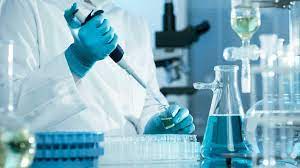Introduction
Laboratories are at the forefront of scientific discovery, innovation, and research. To facilitate groundbreaking work, it's essential to have the right tools and equipment. However, procuring laboratory equipment can be a complex and costly endeavor, making it crucial to have a well-defined purchasing policy in place. In this blog, we'll explore the key components of an effective laboratory equipment purchasing policy to ensure that your research facility operates efficiently and responsibly.
1.Needs Assessment
The first step in creating a purchasing policy for laboratory equipment is conducting a thorough needs assessment. This involves evaluating the specific requirements of your laboratory, such as the type of research conducted, the volume of experiments, and the expertise of the personnel. By understanding your laboratory's unique needs, you can make informed decisions about the equipment required.
2.Budget Allocation
Determine a clear budget for laboratory equipment purchases. This budget should be realistic and take into account the costs of not only acquiring the equipment but also its maintenance, calibration, and potential upgrades. Adequate budget allocation ensures that your laboratory remains financially sustainable and can continue to invest in cutting-edge technology.
3.Vendor Selection
Choosing the right suppliers and vendors is crucial to the success of your purchasing policy. Look for reputable companies with a track record of delivering high-quality equipment and providing excellent customer support. Establishing strong relationships with trusted suppliers can lead to cost savings, better warranties, and faster response times for service and maintenance.
4.Equipment Standardization
Standardizing equipment whenever possible can streamline operations and reduce costs. Having a consistent set of equipment models and brands can simplify training for laboratory personnel and minimize the need for a wide range of spare parts and accessories. Additionally, it can lead to bulk purchasing discounts.
5.Quality Assurance
Ensure that purchased equipment meets the necessary quality and safety standards. Establish a thorough evaluation process that includes product testing, performance reviews, and compliance with industry regulations. This not only safeguards the integrity of your research but also minimizes the risk of accidents and liabilities.
6.Lifecycle Management
Develop a clear plan for equipment lifecycle management. This includes strategies for equipment maintenance, calibration, and, ultimately, disposal. Regular maintenance and calibration are essential to extend the lifespan of equipment and ensure its accuracy. Proper disposal methods should comply with environmental regulations.
7.User Training
Invest in user training programs to ensure that laboratory personnel can operate equipment effectively and safely. A well-trained team not only reduces the risk of accidents but also maximizes the efficiency and productivity of your laboratory.
8.Documentation and Records
Maintain comprehensive records of all equipment purchases, maintenance activities, and user training. Proper documentation helps with inventory management, budget tracking, and compliance with regulatory requirements.
9.Sustainability and Environmental Impact
Consider the environmental impact of your equipment purchases. Whenever possible, opt for energy-efficient models and those with sustainable manufacturing practices. Responsible disposal of old equipment and recycling can further reduce your laboratory's environmental footprint.
10.Review and Adaptation
A purchasing policy should not remain static. Regularly review and adapt the policy to accommodate changing laboratory needs, technological advancements, and budget constraints. Solicit feedback from laboratory staff to make improvements where necessary.
Conclusion
An effective purchasing policy for laboratory equipment in Qatar is a cornerstone of successful research and experimentation. By conducting a needs assessment, setting a realistic budget, choosing reliable vendors, standardizing equipment, ensuring quality assurance, and prioritizing sustainability, your laboratory can operate efficiently, safely, and responsibly. Regular review and adaptation of the policy will help your facility stay at the forefront of scientific discovery while maintaining financial stability and environmental responsibility.


No comments yet